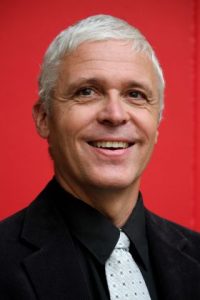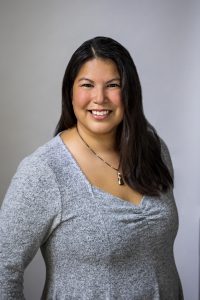3.10: Indigenous Perspectives in Engineering Leadership
Randy Herrmann and Jessica Vandenberghe

Workshop Introduction
Engineering projects have been influenced and directed by prevailing social, political and economic systems. As educators attempt to understand what Truth and Reconciliation mean in engineering and engineering education, they may have questions and be unsure how to include Indigenous perspectives. In this session, our panelists will provide insight into their experiences in bringing Indigenous perspectives and context to engineering and engineering education.
Presenter: Randy Herrmann, P.Eng., Métis, Director of the Engineering Access Program (ENGAP) at the University of Manitoba.

Randy Herman is the director of the Engineering Access Program (ENGAP) at the University of Manitoba. He graduated from the University of Manitoba in 1988 with a BSc in geological engineering. He is a member of the Association of Professional Engineers and Geoscientists of Manitoba and the Professional Engineers of Ontario.
Presenter: Jessica Vandenberghe, M.Sc., P.Eng., Industry Professor – Indigenous Engineering, Assistant Dean, Engineering Community and Culture, Faculty of Engineering, University of Alberta

Jessica Vandenberghe is born of the Dene Thá First Nation, is a sixties scoop survivor and was raised in an inclusive German farming family in northern Alberta. Her exceptional career is based on two engineering degrees from the University of Alberta. She has worked in the oil sands, mining, regulatory, infrastructure, consulting industries and academia. She is the Assistant Dean, Engineering Community and Culture at the Faculty of Engineering at the University of Alberta. Her consulting firm, Guiding Star Consulting, walks in a good way with Indigenous Peoples and Communities and those who want to build meaningful relationships to build strong vibrant communities. She is a mother of two and is passionate about ensuring inclusive organizations and equitable frameworks. She sits on many boards and Councils that contribute to STEM outreach, support underrepresented demographics, build capacity and lead to healing, ethical behaviour and trusted relationships.
Seminar
The content shown is taken from a seminar recording presented by Randy Herman and Jessica Vanderberghe with an accompanying PowerPoint. If you wish to access the full PowerPoint presentation, a PDF version of the slides is available at the link below. Clicking it will take you to a google drive containing the full PDF.
Key Takeaways
- The Engineering Access Program (ENGAP) is a support program for Indigenous students at the University of Manitoba. Its first intake was in 1985, and is a sort of four-legged stool for the Indigenous students who take part in the program. The program offers academic, personal, social and financial support, inclusive of free tutoring, full-time counselling, lounges and study spaces, and scholarships and bursaries. This support also extends to graduate students looking for career help, through mock interviews, help with finding jobs, and reference letters.
- An easy step for institutions looking to do similar things would be through the incorporation of Indigenous elements in courses such as Technology and Society, capstone projects, or first-year design courses. At the University of Manitoba, there also exists a Design Build course which is Indigenous-led, which has architecture students, engineering students, and band members from first nation communities all working together to build a picnic structure on Indigenous land.
- The University of Manitoba has also made it a requirement for engineering students to have at least one Complementary Study elective with exclusive Indigenous content. A decolonization course also exists, covering various topics from an Indigenous perspective such as Water Teaching, Indigenous housing, and the incorporation of Indigenous design into architecture. Internal funds, such as the Indigenous Initiative Fund (IIF) at the University of Manitoba, can also aid in these efforts, allowing opportunities that promote Indigenous learning to present themselves more easily.
- To talk about dismantling colonization, we must acknowledge that there exist people in different zones with respect to becoming anti-racist. There is the fear zone characterized by avoidance and comfort, followed by the learning zone where a lot of the participants in this seminar may fall, and then finally the growth zone which contains advocates and individuals who educate their peers on anti-racism techniques and use their positions of power to aid those who are marginalized.
- The University of Alberta has launched an Indigenous Strategic Plan starting in June 2022, based on the sweetgrass teachings, grounded in ceremony. This strategy looks to braid the past, present, and future. The past shows us accountability, and who this project is for and about, while we seek to empower the present through recruitment and the overcoming of barriers. We can then imagine a better future, with ethical research on Indigenous nations, peoples and lands, led by Indigenous individuals, with high amounts of Indigenous engagement.
- There exists ways of knowing and teachings that have been passed down to this day, that would greatly benefit engineers and engineering students. Concepts such as the Cree teachings of Wahkohtowin – in all that we do, we must consider impact and effect – already have parallels in thermodynamics and sustainability engineering. Other concepts, such as All My Relations, also urge us to consider all of the elements in our surroundings when coming up with engineering decisions. The land, the water, the insects, all of these elements work together in the natural world and are impacted, especially if ignored or forgotten in the engineering process.
- Indigenous worldviews differ from Western worldviews. Indigenous perspectives view the plants, animals and lands as equals, with humans being in a treaty with nature to live in this world. Western perspectives often rely on hierarchy, viewing man as above animals, and plans and the land, focusing on what we can extract from them, and not valuing the byproducts/waste that comes from “extracting value” from these things. The question is then, how do we teach these value systems based on respect and gratitude? What is the best way to build some of these Indigenous perspectives into the curriculum, to ensure that these concepts are implemented in the real world?
- Advice for integration includes utilizing the concept of Two-Eyed seeing. Using both perspectives to approach problems is a good start for learning about indigenous perspectives. It is also crucial to have Indigenous-led, or at least Indigenous-informed, initiatives. If you do not have the personal experience which would allow you to cover these topics, seek help from individuals who do, and work closely with them. Remember to fairly compensate these individuals you are working with, and be mindful that this information often comes at an emotional toll.

